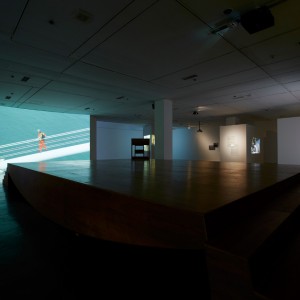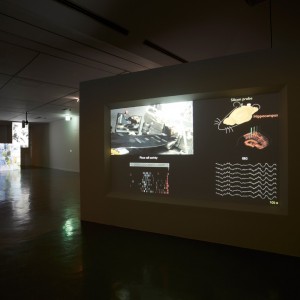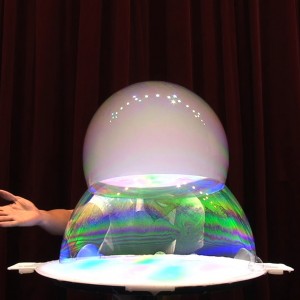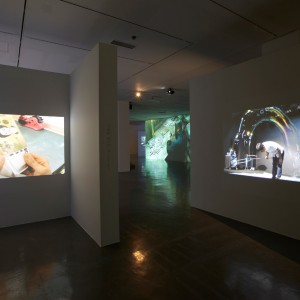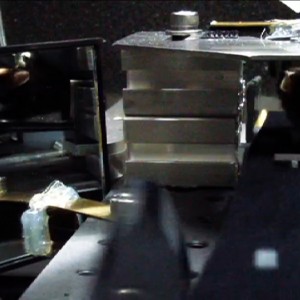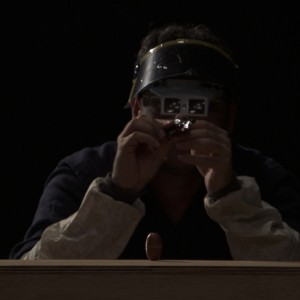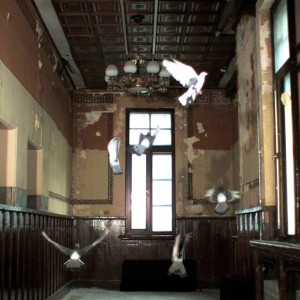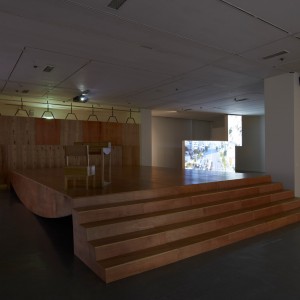Ham Yang Ah
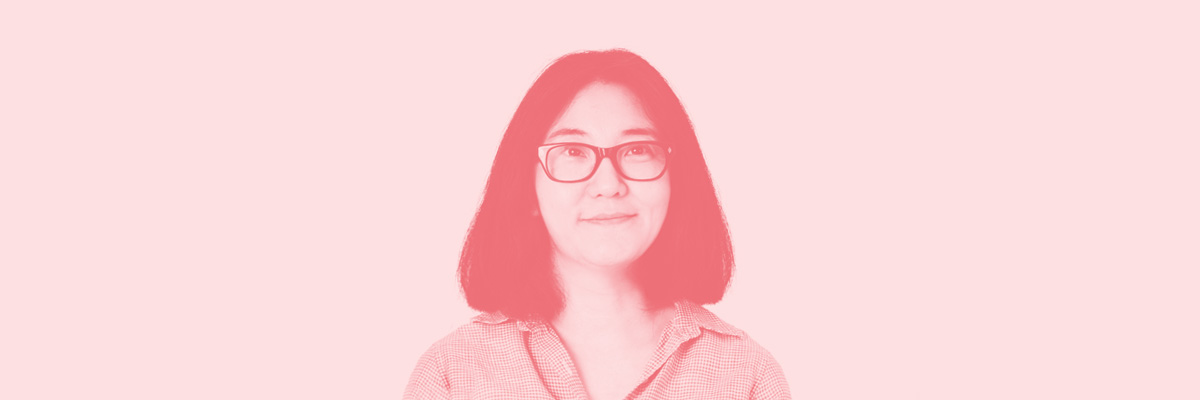
Ham has received numerous awards including Daum Prize in 2004, Arko Artist of the year in 2005, Hermes Foundation Missulsang in 2008 and participated in the exhibition as a nominee for Korea Artist Prize in 2013.
Interview
CV
2010
Adjective Life in the Nonsense Factory, Artsonje Center, Seoul, KR
2005
Transit Life, Kumho Museum of Art, Seoul, KR
2004
Dream…in Life, Insa Art Space, Seoul, KR
2000
Mongyu Do Won Do, Artpace, San Antonio, Texas, US
<Selected Group Exhibitions (Since 2005)>
2013
Videologue Yu Biho Ham Yangah, Arko Art Center Archive, Seoul, Korea
Korea Artist Prize2013, Museum of Modern and Contemporary Art, Gwacheon, Korea
2013
Unknown Forces, Tophane i Amire Culture and Arts Center, Istanbul, TR
Real DMZ 2013:from the North, ArtSonje Center, Seoul, Real DMZ 2013, Cheolwon, KR
Move on Asia, ZKM, Karlsruhe, DE
2012
Kunst Mit Schokolade, Museum Ritter, Waldenbuch, DE
2011
Art of Communication:Anri Sala, Yang Ah Ham, Philippe Parreno, Jorge Pardo, Deoksugung Museum, The National Museum of Modern and Contemporary Art, Deoksugung, Seoul, KR
Be mobile in immobility, creative politics, DEPO, Istanbul, TR (co-organzied)
Be mobile in immobility, the materialized memory, Total Museum of Contemporary Art, Seoul, KR (co-organzied)
21 Rooms, Nam June Paik Art Center, Yongin, KR
Terra Incognita, Incheon Women Artists’ Biennale, Incheon Culture & Arts Center, Incheon, KR
2010
10000 Lives, 8th Gwangju Biennale, Gwangju Biennale Hall, Gwangju, KR
2009
Yang Ah Ham & Fahrettin Orenli, Amsterdam Grafisch Atelier (AGA), Amsterdam, NL
2008
Translocalmotion, 7th Shanghai Biennale, Shanghai Museum, Shanghai, CN
Hermes Art Prize, produced by Hermes Foundation, Atelier Hermes, Seoul, KR
Frieze Art Fair, Project with PiST//Istanbul, Regent’s Park, London, UK
Platform Seoul 2008: I have nothing to say, and I’m saying it, Seoul Train Station(old), Seoul, KR
2007 Open Ateliers, Rijksakademie van beeldende kunsten, Amsterdam, NL
Asian Contemporary art: My Lovely Day, Rodin Gallery, Seoul, KR
Contemporary Korean Art: Wonderland, National Art Museum of China, Beijing, CN
Videonale 11 –AS Media Screening, Bonn Museum, Bonn, DE
2006
A Tale of Two Cities, 11th Busan Biennale, Busan Museum of Art Busan, KR
El mar que te dos noms: videoart de Corea, Casa Asia, Barcelona, ES
2005
Arts Award of the Year, Arko Art Center, Seoul, KR
e-flux video rental, Insa Art Space, Seoul, KR
Against Translation, Total Museum of Contemporary Art, Seoul, KR
DMZ_ 2005, Demilitarised Zone Korea, Heyri Art Valley, Paju Book City, KR
Illusions of Memory, Chinese European Art Center, Xiamen City, CN
Publicly Speaking, SSamzie Space & AIT exchange program, Tokyo Wonder Site, Tokyo, JP & SSamzie Space, Seoul, KR
<Fellowships/Awards>
2012-2013
Mondriaan Foundation (Project), Amsterdam, NL
2010
Mondriaan Foundation (Solo Show at ArtSonje Center), Amsterdam, NL
Seoul
Foundation Arts and Culture, Seoul, KR
2009
Fonds BKVB, Basisstipendium, Amsterdam, NL
2008
Hermes Foundation, Atelier Hermes, KR, nominated for ‘Hermes Art Prize’
2006-2007
Arts Council of Korea (ARKO), KR
2005
Arts Council Korea, Seoul, KR, ‘Arts Award of the Year’
2004
Park Geunhi Culture Foundation, Seoul, KR, The 3rd Daum.net Media art prize
<Selected Film/Video Screenings>
2012
Rencontres Internationales Paris, Palais de Tokyo, Paris, FR
2010
Indi-visual, Yang Ah Ham, Exis-10th Experimental Film Festival, Seoul, KR
2009
IASMedia@MIACA-prominent Korean video artists, Moving Image Archive of Contemporary Art (MIACA), Yokohama, JR
2007
Activating Korea: Tides of Collective Action, Govett-Brewster Art Gallery, New Plymouth, NZ
2006
A Tale of Two Cities: A View of Young Korean Video Art, Palais de Tokyo, Paris, FR, L’Entrepot, Paris, FR
Critic 1
Non/Meaning: Sociality in the Art of Yang Ah Ham
Kang Sumi
(Professor, Dept. of Painting at Dongduk Women’s University)
1. How to Read
“The word ‘derive’ scares those who believe politics must respect a set of rules and that law must be the center of social life, those who think that words have only one meaning, and that to understand one another in life it’s necessary to use words according to their established meanings. This is all wrong. When we speak, we don’t respect the meanings of words but invent them….To understand is to follow the slides in the relations between signs and referents…”1
The above quote comes from Franco Berardi Bifo, an Italian Marxist scholar who defined contemporary capitalism as “semio-capitalism” (capitalism of signs and semiotic goods). This concept seems particularly apt today, when so much social production and consumption involves financial derivatives or emotional labor, while service industries frequently deal in subtle differences of signs. Such practices are completely different from the industrial capitalism of the modern age, which revolved around the production of material goods. In addition, Bifo incisively points out that semio-capitalism has inverted the former autonomy of signs, which were once used autonomously to invent forms of a new relationship, but are now used to justify or even generate lies, swindles and scams. Bifo used the word “derive” (to drift) to exemplify this inversion. For a while, under the influence of postmodernism, “derive” had a positive connotation. But under semio-capitalism, economic power routinely takes advantage of linguistics’ tendency to allow slippage between signs and referents in order to arbitrarily manipulate the rules of politics and justice. Thus, “derive” has become contaminated, and the contamination is spreading through the system like a poison revealing the false politics and utter greed of economic power, which operates above the law. As Bifo points out, the new interpretations of “derive” are dislocated from the linguistic ideal of the invention of free, rich new meanings. With the contemporary capitalist system, the deliberate invention of meaning cannot compete with the rapid corruption of meaning or the mass production of meaninglessness.
Bifo’s critique of contemporary society, which cuts across politics, economics, and humanities, can help to explicate the art of Yang Ah Ham in many ways, albeit indirectly. These ideas provide an intellectual background and a useful humanities and social sciences perspective for examining various aspects of Ham’s art, especially Nonsense Factory, the project she has been constantly developing since 2010, and which will be discussed in the final section of this article. Furthermore, Bifo’s critique can also serve as the foundation for interpreting Ham’s prevalent artistic themes in conjunction with issues related to the transitory nature of social life, such as the freedom or instability of relationality and the confusion of meanings or contamination of values. Therefore, before starting the next section, I ask readers to take a moment to again contemplate the ambivalent meaning of Bifo’s quotation.
2. Transition
Yang Ah Ham began her artistic career in the late 1990s, at a time when Korean art, and indeed the entire Korean society, was swept up in the globalization wave and thus moving towards greater diversity and plurality. She has since become one of Korea’s most renowned artists, both domestically and internationally, focusing primarily on video and installation works. Now, this description may sound familiar, even cliched, to anyone who has read contemporary art criticism. Exhibition catalogues, brochures, and bios habitually tout the “international” status of the featured artists, usually as a way of compressing information. Such phrases convey the impression that artists deserve our attention simply because they have worked in various places. But my brief summary of Ham’s career applies more directly to the specific content of her art, rather than just the reception or scope of her work. Although it may sound clichéd, Ham literally spent these years like a nomad, living here and there, both “domestically and internationally.” This lifestyle has been creatively crystallized in her works, which allow us to simultaneously view opposing concepts, such as the interior and exterior of a society, or the life of an individual and that of the masses. Of course, her art is actually the cause of her “life in transit,” taking her back and forth between antipodal aspects of life, such as familiar and unfamiliar spaces, private and public spheres, and the visibility and invisibility of a society.
Ham continuously observes contemporary social life, and her observations, experiences, and contemplations inspire her to produce images of reality that she then incorporates into her video and installation works. Her art consistently focuses on the social reality where my life, your life, and our lives are objectively revealed. With every work, her subjective contemplation and her physical act of creation turn a spotlight on reality, critically interpret it, and enact it into a different reality through the language of video and installation media. But this “different reality” is not to imply that her works depict a complete fiction or some innocent world of imagination. Instead, her works aim to change our view and perception of the reality that we typically ingest directly and unequivocally. Through her advanced artistic capacity, she reconstructs this unequivocal reality by removing the superficiality. For example, most of us are now well accustomed to life in the era of globalization, and we automatically engage in daily activities such as incessantly moving through virtual spaces via digital media, traveling across vast distances of physical space via transportation vehicles, and toting our belongings in suitcases through repeated departures and arrivals. Ham gathers fragmented images of such activities in her video work Land, Home, City (2006). By re-arranging real images into a “different reality,” she evokes the essential aspects of contemporary life, which is marked by continual flux, both online and offline.
The primary impetus in Ham’s personal life and her art is the idea of “transition,” which might refer to domestic and foreign spaces, a place to settle and a place to pass through, different versions of reality, and the objective world and the world as constructed according to an artist’s intention and execution. In all of these dualities, the situation or movement of “transition” emerges. If we are forced to remain fixated in one place and live one reality, and if we cannot imagine any reality different from the one we know, then it is impossible to conceive of “transition” as a “change into a different condition or situation.” This helps to explain why globalism was so widely and rapidly embraced in the 1990s, to the extent that it too became “globalized.” By approving and promoting the cultures and values of diverse people, globalism offered a way to overcome the homogeneity and obstruction of Western imperialism and totalitarianism. As people everywhere eagerly embraced the value of reciprocal exchanges and movements, globalism spread exponentially, and contemporary artists played a key role in this trend. In actual terms, artists contributed to globalization by participating in international exhibitions and residency programs, but they further stimulated globalism and transformed it into a social and political topic by producing pseudo-ethnographic works that actively intervened in regional politics and society.
Ham’s artwork from the early to mid-2000s exemplifies these aspects of globalism. Illusion of Memory (2005) is a single-channel video based on her research of small and medium-sized cities in China, which she conducted while doing a residency program there. In Transit Life (2005), Ham captures a nightscape of a ferry shuttling between Mokpo and Jeju Island, representing our constant spatial movements, but also eliciting the unique instability of the contemporary era. Dream in…Life (2004) and Tourism in Communism (2005) revolve around similar tourist carriages found in three different places (New York City, Chicago and Mt. Geumgang). Although tourist carriages are an antiquated cultural form, they are commonly appropriated by global tourism as an effective signifier. In these two works, she forces the viewer to consider the differences between reality and their dream of reality, as well as the political and capitalist ideology at work in reality. These works represent Ham’s artistic responses to globalism,2 and together they form a landscape of global-local transitions that she privately captured in her “nomadic mode of life.”3 At the same time, they provide opportunities to reconsider the meaning of the contemporaneous concept of globalism.
3. Meaning and Non-meaning
For the last ten years or so, Yang Ah Ham’s artistic intentions and practices have moved beyond simple visual collages that traverse oppositional aspects of reality or hover between various social spaces and living landscapes. All of the abovementioned video-installation works eschew a definitive, unitary meaning in favor of neutrality and ambiguity that allow each viewer to form their own interpretation. The scenes of these videos seem to be composed according to the intermittent movements of various incidents, rather than the expected narrative structure of an introduction, development, turn, and conclusion. Furthermore, instead of directly proposing a message or moral, they produce meaning through the multi-layered quality of the images, which encourages the free derivation of meanings. We can infer that, at least at that time, Ham’s works were more akin to an “image−mirror” that reflects reality, which possibly extends its meaning in the process, rather than an “image−text” that criticizes reality or provides further insights on society.
This trend is exemplified by Adjective Life − Out of Frame, a video-installation work based on performance that Ham introduced in Amsterdam in 2007, which has since been featured at many major special exhibitions in Korea and abroad. This work isolates the moments of our senses, perceptions, desires, and appreciations, exploring how we relate to the things and people in the world around us, physically or psychologically, directly or indirectly. First, Ham sculpted a chocolate bust of a European curator who is well known in the international art field, and then she hired five dancers to interact with the chocolate bust on video. Rather than directing the dancers with specific instructions or choreography, Ham gave them complete liberty to do anything they wanted with the sculpture based on their own impulses. The resulting video is a documentation of the flow of human will or desire, as the performers indulge their impromptu whims to caress, lick, bite and embrace the bust, simultaneously formulating both a physical relationship with the statue and a symbolic relationship with the curator. We observe a wide range of interactions between the performers and the sculpture, from subtle glances to sensuous movements of hands or a tongue enraptured by the tender texture and sweet taste of the chocolate. An interesting contrast emerges between the seemingly solid chocolate and the living bodies that touch the head in a very primal and sexual way. Furthermore, the behavior of the five dancers evolves throughout the video, as they first circle around the unfamiliar statue somewhat apprehensively, before gradually becoming more open and intimate with their gestures and interactions. Through this series of actions exhibits, we witness the progression of feelings that a subject feels toward an object, demonstrating that familiarity is not an abstract concept, but a parade of very detailed and subtle senses. The viewers come to feel that they can unknowingly interfere with and share in a range of different perceptions: the delicate interplay of acts as people become entangled with one another; the progression between feelings that are discerned by very minute differences; the exchange of keen sensations. As such, the video provides a cross-section of the dynamics that go into forming “social intimacy.” Adjective Life − Out of Frame visualizes how our instinctual desires unfold and change in certain ways within the open space of society or a community of coexistent people. For the audience, this work serves as a communal stage where their own perceptions are interwoven with a wide variety of sensations, including curiosity, eroticism, longing, possessiveness, love, and hatred. All of these feelings and many more are embodied by the dancers’ physical and emotional expressions with the chocolate sculpture, the signifier of a person with some secular power. On this communal stage, the audience’s perceptions add more layers to the complex system of sensations that formulate our relationship with the world, such that the work and the audience become entangled in another of the infinite relational networks that constitute life.
The title of the work is also worthy of interest, as Ham innovatively uses the word “adjective” as an adjective to modify “life.” But the phrase also works like a predicate, declaring that “life is an adjective.” Ham seems to view life from the perspective of an adjective, rather than a noun, verb, or adverb, which means that her art does not attempt to recreate or develop life as it is, but instead acts to indirectly mediate and generate meaning, like an adjective. In a positive context, this might be considered her way to “derive meanings.” Very few people, if any, consider life to be a closed or complete system, but Ham’s view of life as an adjective is still quite unique. As modifiers that can only function by being attached to nouns, adjectives have a relatively unstable linguistic status, since they can be replaced or nullified by other rhetoric. As such, adjectives carry some implication of negation. But through her theme of “adjective life,” Ham attempts to show that the essence of our lives (if there is any) cannot be comprehensively surmised by a noun, verb, or adverb form. Unlike nouns, verbs, and adverbs, Ham believes that adjectives are most suitable to life, because adjectives can express the nature and condition of life and, above all, existence. This perspective can be traced back to her own somewhat transient lifestyle, and the unique values of that life that cannot be deferred. Her oeuvre has emerged from her will to elevate that life into a work of art.
Adjective Life − Out of Frame continued to evolve in 2010, when Ham created an entirely new Korean version of the work. Audiences who encountered this updated version experienced a completely different set of perceptions from those who saw the original, again highlighting the “adjective” nature of our lives. Adjectives are much more than innocent modifiers; they are capable of forming whole expressions that are ineluctably deduced from the experiences and recognitions that we accumulate, both socially and culturally. Indeed, certain social and cultural conditions make it almost impossible to devise an adjective life. For the 2010 work, Ham recruited ten Korean performers, who responded to the chocolate head in a much different way than the performers in the 2007 Amsterdam performance. As opposed to the original performers, the Koreans’ interactions with the statue were rather peculiar, even a bit crude. At first, they simply hang around the statue, making some curt, indifferent gestures. Over time, however, they start to derisively snicker at the chocolate head, and treat it explicitly as food to be eaten. Eventually, they stomp on the statue to break it apart, as if seeking to vent their wrath against it. Viewers might be reminded of an actor trying to maximize a certain emotion, but the more subtle ways that the young Korean performers react and relate to the object equally express their desires. Both form and content are crucial to determining how we shape our lives, and in the case of the Korean performers, the unrefined “verb” that spontaneously emerges is the content of the violent and rough cultural background that serves as their form. Hence, their verb takes on various rampant forms, as they “do” things without first probing the situation with subtle perception; they “end” the relationship by “destroying” the Other due to their inability to endure the delicate strain of their relations with the Other; and they “exaggerate” their carefree attitude about the incident, even though their actions are still swayed by their basic instincts. Thus, interestingly, the 2010 version of Adjective Life − Out of Frame depicts a verb life, or a life composed of actions that are somewhat absurd and nonsensical. Thus, we must modify our earlier assessment that Ham’s art defined life as an adjective by adding the following prerequisite: “not all lives are like an adjective because of the structures of social consciousness and psychological environments.” The 2010 Adjective Life − Out of Frame reveals the possibility of a nonsense life, defined by the utter absence of meaning and impossibility of self-awareness.
4. Derive ≠ Relation
If we are able to communicate about even the most subtle aspects of sensibility, then we can achieve true freedom and beauty. Similarly, if the meaning of a word is liberated to fully embody all the diverse possibilities of perception, then we can achieve true empathy and communication between ourselves and the Other. On the contrary, if the meaning is sterile or stillborn without any variegation, due to our dull consciousness or violent actions, then we willingly submit to the bridle that restrains us and forces us to keep living in the same manner and mental state.
However, there is a third possibility wherein rhetoric is corrupted, such that meaning is supposedly liberated under the false guise of freedom. This leads to embellished wordplay that inevitably devolves into lies and gibberish that insinuate themselves into the legal, political, and economic discourse of a society until the moral and ethical ideals have been completely subverted. Bifo’s meditation on “derive” connotes such a case. Today, meaning has drifted away amidst a flood of confusing new jargon: subprime mortgage, Free Trade Agreement, derivatives, floating assets, Creative Economy. “Because of the intrinsic inflationary (metaphoric) nature of language,”4 meaning has drifted into a strange new realm where it can somehow be used to justify the astronomical salaries of financial capitalists, to rationalize the unequal trade conditions that multi-national companies thrive upon, and to enthrone the chimerical concept of capital, based on numbers with no genuine assets behind them, as the only value for us to revere. Is this negative development merely an isolated case, among the almost infinite possibilities? Most people would say no, because this rhetoric has been so loudly and consistently drummed into our ears throughout the global network of the 2000s. Rather than an exception, this phenomenon represents the cruel yet undeniable order of the reality that we currently observe, and which we feel compelled to tacitly accept, either voluntarily or involuntarily. In this reality, the “derive” of a meaning is realized restrictively, in a way that is qualitatively different from the freedom of relationship.
In the past, we overcame oppression, uniformity, rigidity, obedience, closure, and unilateralization with concepts like freedom, pluralism, fluidity, creation, transition, and interaction, but today, the true value of these concepts has been lost. Where has it gone? Simply put, those words are now adrift in a purgatory between meaning and nonmeaning, such that their inherent value is getting increasingly contaminated. Through Nonsense Factory, which took her more than four years to produce, Ham offers a compelling artistic consideration of this confusion of contemporaneous meaning, with particular focus on how our values have become polluted to the point where we can no longer hope to grasp their identity.
5. Nonsense, Factory
Adjective Life − Out of Frame represents a turning point in Ham’s career, dividing the work that came before it from the work that came after it. In terms of form and style, her work after Adjective Life − Out of Frame incorporates various genres and media—video, painting, sculpture, performance, text and audio—combined into a single work or project. While she did make video installations prior to Adjective Life − Out of Frame, the earlier works are primarily limited to the single-channel video format, while her works after 2007 utilized video in more complex, pluralistic ways. Notably, these formal changes can be seen as reflections of the deeper cognitive and internal changes that Ham was experiencing, as she matured as an artist and began to examine contemporary life and society from a more critical perspective. As such, her work always conveys a slight sense of aesthetic ambiguity, refusing to simply settle into a neutral zone of a meaning. Her intentions for the work
are always very legible and communicable, allowing viewers to perceive and judge it in a more detailed way. After Adjective Life − Out of Frame, Ham shifted her priorities away from merely trying to cultivate artistic appreciation. That is, rather than working within the typical relationship between artist and viewer, wherein one of the two parties is always absent, she began exploring ways to enact a much richer, more intimate relationship between artist and viewer. The allegorical social critique of Nonsense Factory serves as a common ground, allowing Ham to probe both the structure of our lives and their internal dynamic function.
Nonsense Factory started out as an allegorical short story that Ham wrote. For her 2010 solo exhibition at Artsonje Center, she printed the story in a large font on contact paper, and stuck it to the glass front of the second floor of the exhibition. Thus, rather than representing one of the visual elements of the exhibition, it functioned more like a description that the viewer had the option of reading. She also printed the story on regular paper so that viewers could pick up a copy and read it. So what did she expect the audience to gain from this story? In the current plans for the 2013 version of the project, she explicitly identifies the “nonsense factory” with society. Hence, it is fair to say that the meaning of Nonsense Factory is the meaninglessness of contemporary society.
Nonsense Factory depicts a factory set in a fictional location, adopting the novelistic device of “coverage by a reporter for a company newsletter.” The factory has six rooms: “Central Image Box Control Room;” “Welfare Policy Making Room;” “Coupon Room;” “Artists’ Room;” “Factory Basement;” and “Blue Print Room for Future Factory.” Those names—especially “control room” and “welfare policy”—certainly ring true, as if they were culled directly from reality. Nonsense Factory comes to resemble a microcosm of our society, and those names are a big reason why. But beyond the titles, the rooms themselves are eerily familiar to us, evoking various elements and functions of our society.
The first room, “Central Image Box Control Room,” is both structurally and functionally reminiscent of the ubiquitous surveillance and control of contemporary society, where every detail of our lives is constantly recorded, managed, and regulated under the omnipotent umbrella of cutting-edge digital technology. Over the last decade, one of the prime topics for debate around the world has been the increasing amount of surveillance and data-tracking enabled by digital and video technology. In the years leading up to Ham’s creation of Nonsense Factory, discussions on the dangers of such social controls were becoming increasingly fervent, with more and more people referencing “Big Brother” from George Orwell’s 1984 (published in 1949). Today, in 2013, as Ham presents an even more highly developed version of Nonsense Factory, the ominous predictions made by social critics have become a frightening reality that goes beyond even Orwell’s fiction. In June 2013, Edward Snowden, a computer engineer and a former employee of the Central Intelligence Agency (CIA), revealed to The Guardian that the United States National Security Agency (NSA) had been using computer technology to monitor and collect a wealth of information from around the world. Specifically, the NSA used a computer surveillance program called PRISM to monitor Internet users, including American citizens, while also hacking into other countries’ computer networks to steal confidential information. These types of activities are happening constantly around the world, even though the majority of the population is blissfully unaware of it. In Nonsense Factory, Ham uses the allegorical device of “Central Image Box Control Room” to expose how the people of the world remain oblivious to the state of surveillance.
In the second room, “Welfare Policy Making Room,” a young factory employee is buried by an overwhelming workload, such that he cannot take time to even lift his head and catch his breath. The worker’s exhausting plight is contrasted by the displayed slogan “Happiness for Everyone!,” recalling a pencil drawing that Ham made and displayed in the entrance of Artsonje Center for her solo exhibition in 2010, which was entitled I Came for Happiness/Submission. Here, “I” might refer to the artist, but it could also be anyone who reads the sentence. The overwhelmed employee might be a portrait of “I,” or it might be the portrait of all of us who senselessly (non-sense) “surrender” to the empty promise of “happiness” ideologically propagated by power. It might be a portrait of Snowden before he became aware of the grave absurdity of his society, and realized that he had to blow the whistle against his own country’s illegal surveillance of people under the guise of world peace and security.5
In the third room, “Coupon Room,” Ham satirizes the monetary economy of capitalism, an analogy that is even more evident in the short story upon which the piece is based. In physical terms, the coupons are simply pieces of paper, but in reality, they are precious materials that make everything else seem irrelevant. In her story, the managers and workers of the Nonsense Factory use the coupons to accumulate wealth and gamble, while taking advantage of the people’s psychological need for the coupons to lead them around by the nose. The most significant room in Nonsense Factory is the fourth room, “Artists’ Room,” which is occupied by a master artist who acts very inhumane towards his assistants and anyone he feels is inessential to his work. However, the artist spuriously tells the reporter of the company newsletter that the most important attitude for an artist is the “understanding of others.” Of course, hearing such a response from someone who treats people so carelessly symbolizes the absurd snobbishness of some people, particularly within the art world. But from a more macroscopic perspective, Ham’s explicit reference to art based on the “understanding of others” illustrates a deeper contradiction within the themes of artists. She is criticizing the structure of public discourse, and its rhetorical deceptions, for reducing huge and complex issues into themes for popular culture or talking points for political elections. The “Artists’ Room” reflects the duplicity of artists and others who latch onto trendy themes (e.g. “human rights,” “consideration,” “relationship,” “communication,” “healing”) and appropriate them for their own use. This duplicity that superficially addresses genuine social problems only serve to confuse and conceal the real causes and effects of those issues, inevitably paving the way for more economic inequality, manipulation, violence, imbalance, non-communication and fragmentary relationships.
Thus far, using a fictional factory as a stage, Ham has tried to reveal the underlying structure and hidden attributes of contemporary life, as well as the systematic relationship between people and society. But where is she going with this endeavor? Perhaps she simply wants the audience to share her awareness of the problem, and therefore recognize the serious forms of oppression and restriction that are concealed by acclamatory names such as “Free Trade” and “Creative Economy.” If the lives of the people are dictated by the will of the system and the capital of those in power, then that is not freedom; it is fascism. And it will remain fascism, despite the disguise of specious issues such as flexibility, pluralism, horizontal exchange, networks of human and material resources, as well as the supposedly rich meanings that are invented and attached to such issues.
Nonsense Factory concludes with the sixth room, “Blue Print Room for Future Factory” where a “promising architect” is tucked away, covertly re-designing the structure of the factory in order to create a “system to maximize productivity.” When Ham developed Nonsense Factory into a full-scale installation work in 2013, the first space was called “Factory Basement,” where a group of anonymous people bumped into one another and energetically mingled on a big platform shaped like a halfmoon or a ship. Due to the shape of the platform, the motion of the people caused it to rock back and forth like a cradle or seesaw. “Factory Basement” and “Blue Print Room for Future Factory” seem to mark the beginning and end of the Nonsense Factory, allowing us to tacitly recognize the two-faced nature of the society, as Ham intended. For here we have an intensive system that purports to maximize productivity connected to a structure of constant disturbance. The clandestine nature of planning and policy-making is contrasted with the openness and visibility of dynamic actions. I do not believe that Ham intended Nonsense Factory to be a direct analogy of our actual society, but more of an initial response or a warning sign. It seems unlikely that viewers who see the moving platform and video of people mingling will suddenly start to imagine freedom and a more intimate social relationship. But more importantly, visitors to the Nonsense Factory might take time to reconsider our strange contemporary times, when the lives of people around the world are dominated by instability, and exchange and communication have become a global obsession.
1. Franco Berardi Bifo, Gasry Genosko & Nicholas Thoburn (eds.), Arianna Bove, Melinda Coope (trans.), After the Future (Edinburgh: AK Press, 2011), 105.
2. For more detailed discussion of these works, see Kang Sumi, Wonderful Reality of Korean Art (Seoul: Hyunsilbook, 2009), 164 -175.
3. Reader’s Note: hereafter, direct quotations without reference come from Ham’s own notes.
4. Bifo, Ibid., 100.
5. Snowden’s interview at The Guardian: http://www.guardian.co.uk/world/2013/jun/09/nsa-whistleblower-edward-snowden-why
Critic 2
How to Touch Image? Or What’s Image Touch?
Yang Ah Ham’s Nonsense Factory: Cadaver and Phantom in Capitalism
Chien-Hung Huang
(Assistant Professor, Department of Fine Arts at the Taipei National University of the Arts)
With her video project Nonsense Factory, Yang Ah Ham has been selected as the final four candidates of 2013 Korea Artist Prize. Today, it is obvious that Ham’s work is worthwhile for us to probe into the conceptual creation of image. Ham’s images could neither be regarded as the technical pursuit aiming at the abstract category of aesthetic, nor be taken for the media for any public issues; it even could not be looked upon as the representation of the artist’s self. In other words, this very image is no longer an image belonging to someone or something, but the image of neighboring. How to think through the relation of the image as neighborhood, or the image neighboring on? How does the image neighbor on? In this regard, it seems that Ham proposes a basic strategy similar to that of Deleuze’s. The latter reveals the indistinguishable between the real and the virtual. The artist, on the one hand, attempts to present, in the everyday life, the indistinguishable between the phantasm and the routine. On the other, the artist also activates the dynamic relation (the be-coming) in order to repeal the privilege proper to the monopolization, by which the artist mobilizes the experimental concepts passing through the relation between self and images, image and image, and the others and the images. According to this, maybe, only Harun Farocki’s concept of image could respond to that of Ham Yang Ah’s.
We could consider Nonsense Factory of 2013 as extension of her concept Adjective Life > Nonsense Factory of 2010. This idea Adjective Life > Nonsense Factory and Harun Farocki’s soft montage both attempt to stop reifying the image in service of commodifying and empowering contemporary art in the name of the original. Contrarily, they observe the clichés of the world at present, or those produced or used by this world to describe our day-to-day life, by which they try to present the paradox of the society of the spectacle from every different aspects: the precarious life (of multitude), and the inhuman images (by commodification, the machine, and the spectacle.) This way of re-touching the image is the conceptual strategy that Farocki called the soft montage, and also the one that Ham uses to think of our life. In fact, they both go further than the conceptual strategies of relational aesthetics or that of post-production in order to make the relation in every work more clear and, at the same time, depart form the position of artist, as a centralized subject, to the constantly changing state of the relation. Therefore, it could be said that while pointing out the production of the image, they are proceeding with an artistic act of the political and the critical (in other words, the art itself should become an adjective.)
Though Farocki’s and Ham’s artistic acts have their differences, they are not different in the strategies of artistic presentation and concepts but in the positions on aesthetics-politics. It is just like what Kang Su-mi has pointed out that Yang Ah Ham uses the inequality in the Korean title of the exhibition held at ArtSonje Center, Adjective Life > Nonsense Factory, by which the inequality is designated as the possibility of art as such. Yet, in sense of mathematics and psychoanalysis, the inequality respectively suggests the proximity in the former and the drive in the latter, in which Lacan further infers the schizophrenic force of the phantasm. The world of capitalism is as unfortunate as what Guy Debord, in tune of over-saturating ideologies, has proclaim that the real world has been replaced by a reified world of commodification. It seems that this proclamation might be what Ham’s Adjective Life has been designated for. Nevertheless, it is due to Adjective as a precarious relation that the possibilities of “>” (greater than) appear.
Yet, it is because that Lacan’s or Farocki’s ways of dealing with the relation of objet a and A(S) (big Other) follow the double inequality of the formula of phantasm, “$ ◊ a”, and aim at thinking of how object a being produced from A(S), Farocki, thus, dangles after this very European critical thinking, in which he often implicates some kind of big Other as the controller in his works. Although Yang Ah Ham keeps this relation, she arguably propels another supposition; that is to say, in a capitalistic society of the radical democracy, the objet a is the experience of the excess of the big Other, of which this experience coincides the phantasm with the routine. In this regard, unlike Farocki, whom often deploys the work in a confrontational gesture, in her collection of video images of television, Ham goes deep into the observation and the apprehension of experiences, and touches the moment of the craftsman that the images have revealed.
Therefore, in this exhibition, Ham has tried to invite a craftsman of painting restoration to do a live performance. Apparently, this deployment can enhance the interactivity of this project in order to make its audiences to more clearly grasp a possibility; that is to say, even as a part of the mechanical production, one could still engender creativity (the plus creativities). Thus, this artist, who is also located in the state of the adjective (just like her project in 2007, Adjective life – Out of frame) can produce a visible mise-en-abime in the world of images, by which it brings the audiences of everyday labour back to the world of self, and makes them see the plus creativities outside of the big Other as the society of the spectacle.
This is the possibility similar to what Richard Sennett has inferred to. Sennett has spent nearly 20 years in field work to figure out this possibility. In accordance with his mentor, Hannah Arendt’s argument for the work differing from the labour, Sennett’s inference takes one step to depart from the phantasm of Grand Narrative in order to more carefully think of the possibility of emancipation and the value of humanity. Nevertheless, these two theorists both avoid the problematics of the artists. (Interestingly, Ham, on the other hand, questions the given identity of an artist.) Maybe, after several times of economic crisis and after Asia having become the new platform of globalization, Ham attempts to change the given channels of distribution of the sensible from the aspect of field work observation. This attempt is very important. The visibility of mise-en-abime that she has revealed can make differenciation between the everyday labour and the plus creativities. Here, it appears a new concept; that is to say, the given distribution of the sensible is neighboring on the virtual one. In contrast with Jacques Ranciere’s vague conception of emancipation in the theory of distribution of the sensible, Ham proposes an even clearer method of experience.
After the globalization, the common phenomena seems to be that every place in the world is full of factories, science parks, and shopping malls; furthermore, almost everyone tries to survive under the situation of overwork. If the hierarchy of military management in 19th century has became the constitutional structure of society, Asia after 2000, followed this very same structure of globalization that the Western countries had been planning for decades: every connection of the social relations, especially that of relations of production, has been taking private. This phenomenon has been carrying forward to our relations of production and working situation. On the one hand, we as the individuals more and more have to deal with the situation that the production could only make sense to some minorities as investors, but it remains non-sensical to the most majority that are involved in mass mechanical production. On the other hand, the distribution of the sensible highly related to the distribution of the global work- force clearly ask us to deal with the differentiation of structure and relations of production, but not with the new sensibilities that could always been bought over anytime.
A partition board is hung at the entrance of the exhibition; thus, the entrance is scaled down as a limited doorframe. When entering the dark room of exhibition, audiences will step onto a slightly swaying stage due to one’s weight. On the stage, there is a steady working bench. The mise-en-scene of this stage is some sort of declaration of the situation; that is to say, Fifth Room: Factory Basement: we are situated on a ever swaying surface, yet assigned to a fixed working position. In front of the stage, there is the biggest video projection of this exhibition, where is the first one of the six rooms (six different places of production): First Room: Central Image Box Control Room. Throughout the whole exhibition, there is an emblematic image appearing in many works. That is a black and white inverted image of Little Angels Folk Ballet of Unification Church. Actually, this inverted image was a mistake that had happened in 1972 during the television broadcasting. Thus, it seems that this contingent contradiction could be regarded as the process that Korea has undergone from the conformity to the ideology to the hidden real of the false ideology. When the inverted image with limited dpi is enlarged to the extent scale, that one cannot identify the figure of Angels in image but only the pixels, one can see that there are many different working stories embedded into the pixels. Thus, just like the inverted image, every working story intensely presents the paradox co-existence: the routine and the expert, the labour and the knowledge, the system and the invention. These stories reveal that people resist the reality of this contradiction and, at the same time, subjugate to it. Though these video clips could be seen in many documentary reports, in Central Image Box Control Room, they, on the wall of projection, intensely focus on the moment at the epiphany moments of the expert knowledge and the distinctive operation. Undoubtedly, through Ham, it becomes visible for us the moment at the borderline between the labour and the creation.
Due to the space installation of constellation without any certain guidelines, the swaying state of ambiguity and uncertainty that the audiences have felt in the first installation would make the full-dimensional exhibition space become the space of wandering phantoms. Since what audiences have seen are those media images familiar to them, these images, thus, seems to them that they are looking at various cadaver-images in the capitalistic society of the reification, the commoditization and the fantasization. Yet, the audiences in real, who are wandering in these rooms of factory, are like the phantoms that just lift away from their cadavers and search for the moment of encounter that might be deployed by artist (in sense of Derrida’s concept of specter). Nevertheless, this very encounter is not that with artist, the creativity or the masterpieces of art but that with dehors (outside in) being inherent in the labour of one’s self. On the left side of stage, we can see a video installation named Perpetual Euphoria: there, the three videos respectively are: the one is the image of the cluster of bees killing each other; the other is that of a long take shot on merely one street block; the third one is the electronic board which existed already on the rooftop of one building in the first image of street scene (at the right top corner.) It showed commercial or news films. On this electronic board, artist adds more news clips or clip made by her and puts them back in the screen of the electronic board. Ham finished this work during the period of Seoul Mayor Campaign. Therefore, that what artist uses this particular kind of installation to make us recognize is not the difference between nature and alienation, but the co-incidence of three different kinds of living time and surviving desires. Through the window on this partition parapet, we can see the brief project discourse of Nonsense Factory. Ham appropriates the given images that audiences can immediately be immersed in them, but still, in every instance, sets up the distance that alienates her audiences from the simple projection of one’s self on the images; inasmuch as, artist makes us spectralized.
On the both backsides of Central Image Box Control Room, there are two triangle cubes. On the one side, it is Sixth Room: Blue Print Room for Future Factory; on the other, is Bird’s Eye View (2008). The former work is a camera shot set on a mouse’s head. At the same time, the work uses various kinds of instruments to observe and diagnose this mouse placed in the constant movement within the water supplying system. The artist presents this work in a way of respectively and simultaneously displaying following three aspects – the drawing of the assemblage, the CCTV monitor image, and the diagnosis data of the mouse. The later work is the video shooting of pigeons at the old Seoul station built in Japanese colonial period. There are three videos. The first one is the pigeons in a confined space shot by high-speed camera. The second one is a CCTV camera pilot set on the back of a pigeon recording the vision of this pigeon. We should note that in the second video image the previous confined space has been opened up by a window. Thus, the third video image seems like the vision of one pigeon flying, regarding other pigeon fly toward the city this time. These images tend to create certain kind of illusion of the in-human images.
Behind the wall of Central Image Box Control Room, there are two sarcastic and ambiguous works made by Ham. One is the installation of neon-light tubes named I came for Happiness/Submission, but at the end of English part of writing with Romanized cursive style (「 I come for」 ) is blurredly written, therefore the blurred Korean words in the title get a double meaning: happiness/submission (haengbok/hangbok). The other is a statue made out of chocolate entitled An Artist, one part of project Sustained Portraits, expressing the paradoxical intention of artist. These two works respectively are Second Room: Welfare Policy Making Room and Fourth Room: Artists’ Room. Although these two works are apparently presented as works of art, they respectively correspond to the stories of the lost of conversation and that of discontent and Kitsch. These two stories are the negativities being inherent in-between the ideology and the identity. Thus, on the other side of the stage of Factory Basement, there is Third Room: Coupon Room, which is the work most related to the labour and to the implication of desire. We can see a lot of images dealing with finance bills, such as currencies or credit cards. This work is also the installation that emphasizes the production line and the uniform. Furthermore, as it should be in this work, in the beginning and the end of Coupon Room, it inserts the images of the bubble performance referring to artist, and the images of the red pen-ink referring to Factory Basement. Behind the projection of the fountain pen with red ink, there’re stairs for audiences to get to the top of the image. This hierarchic disposition of ascension makes the audiences feeling themselves like the owner with power to write down the history, and with the panoramic view of the whole factory space.
In fact, these six rooms with six themes correspond to six reports from each section of the factory, intertwined from the given images of documentary reports and the imagination of artist. These six successive reporting stories are just like Kafkaesque journey, an absurd course full of fantasy. The only difference is that, in Kafka’s journey, the surveyor or the public official, who visits the castle, becomes the worker and the reporter of worker’s newspaper in Ham’s version. In this regard, we should surely mention the most profound artist of image, Orson Welles, in relation to Kafka. From Orson Welles to Terry Gilliam or Steven Soderbergh, the core of their image narrative was the reality full of gothic noire (darkness). Relatively, Ham pushes forward the Kafkaesque absurdity of contradiction to the intertwined and stratified experience of reality. In the era of globalized creative industry, labour and work cannot be distinguished by Arendt’s dichotomy of “survive/create.” In fact, what the everyday life sustains is the constant crossing of in-betweenness; that is to say, the precarious desire situates in-between the comfort of everyday life and the symbolic achievement of history. Through the unfolding from the in-human images (the animalized objectivity), the images of others (the television documentaries of everyday life), and the images of artist (the self-dissolution), this space deployment of constellation is bogged down into the detailed laboring experience of every individual case. At the same time, in the space of crossing and intertwining relation, it brings about a rhizomatic world that is not to represent the reality but to change the reality.
From this time of re-configuration of Ham Yang Ah’s works, we can clearly focus on her viewpoint on the experience and the world, and how her concept re-produces the images. We, the audiences as phantoms, are just looking at ourselves living in the capitalistic society and searching for the emancipatory moment of a Deleuzian nomad: the rencontre (encounter) of cadaver and phantom.

